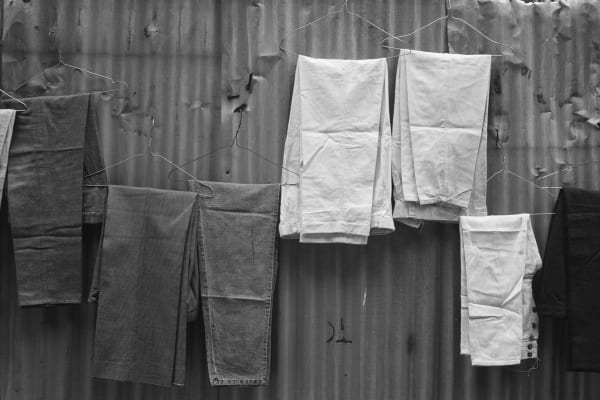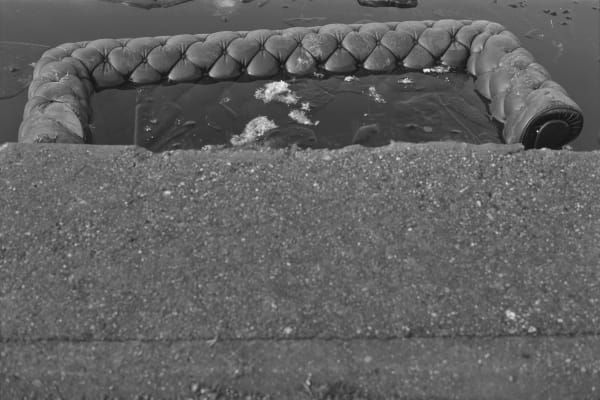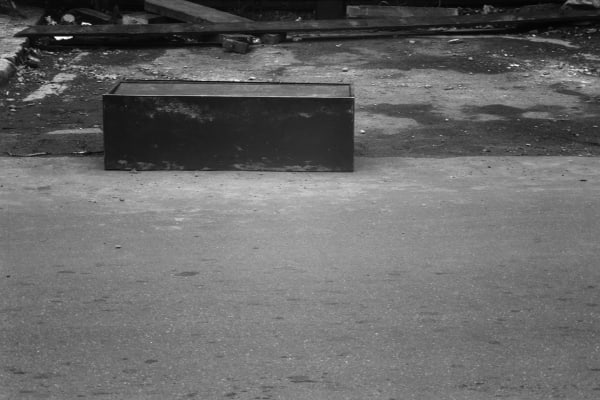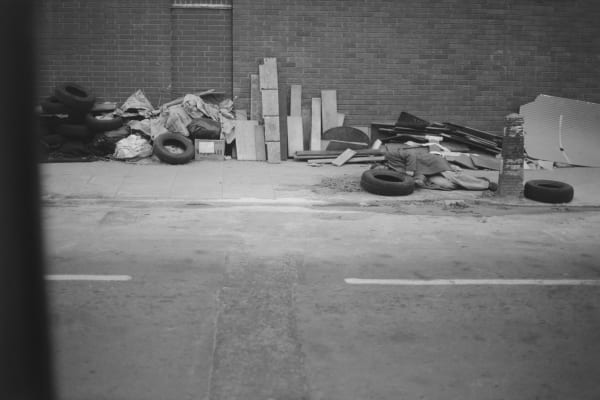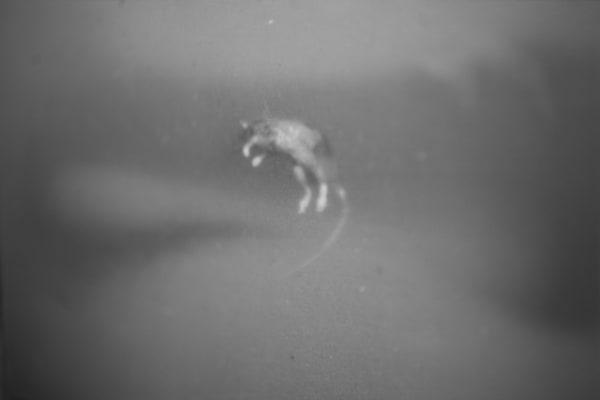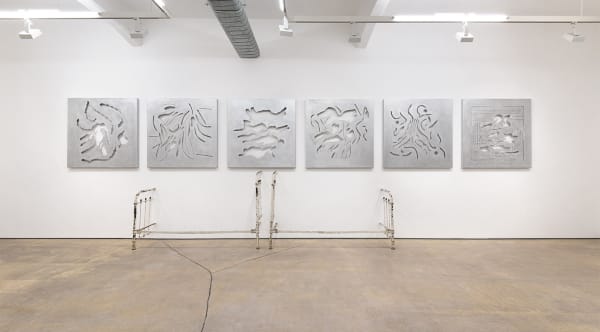Stuart Brisley: From the Georgiana Collection
Hales is pleased to announce Stuart Brisley’s solo exhibition From The Georgiana Collection. This will be the gallery’s first exhibition with Brisley.
Across Brisley’s ground-breaking career, which has encompassed painting, sculpture, site-specific installation, sound, photography, writing, film and performance, he has remained committed to making work that questions existing social and political structures. In the late 1960s, he pioneered the development of performance as an art form with the potential to create a new participatory and engaged artist-audience relationship, one which could activate the viewer. For Brisley, contemporary performance, with its utopian democratic foundations, can ‘point to political views which challenge the interest of those who regulate the institutions of society in their own image’ (Stuart Brisley, Being and Doing, 1984, 16mm film).
This exhibition presents key works from the eponymous Georgiana Collection, spanning from 1979–86 (the initial period during which Brisley developed the Collection), 1988–91 (a second phase) to the present day. This significant body of sculptural and photographic work is a powerful, focused exploration of the experiences and ideas which have preoccupied Brisley throughout his career. The Georgiana Collection is a fictitious institution whose name is derived from Georgiana Street in north-west London, where Brisley lived between 1978 and 1986. This specific location was, at the time, also a site of a hostel for the homeless, and a waste ground on which these homeless people would often congregate during the day. Moving beyond performance, the works in the collection act as permanent records of the marginal existences Brisley has encountered whilst living in specific areas of London, from Georgiana Street to Brick Lane, where Brisley lived between 1987 and 2008. Through this fictional institutional collection, Brisley has sought to propose an alternative to the authority of institutions.
In each of the works in this exhibition, institutional attempts to fix meaning and impose fixed structures are in some way frustrated. In particular, the boundaries between inside and outside—of urban space, of community, and of the individual—are deconstructed and made permeable. The photographs taken by Brisley (initially on Georgiana Street, before moving to Brick Lane) are reflections of the artist’s fractured perspective, both resident and outsider—immersed and engaged in his social surroundings and yet afforded a sense of distance and creative control through the camera’s lens. As through a spyhole, they depict an officially ‘public’ space overflowing with traces of the traditionally ‘private’ or domestic: folded trousers hanging on a laundry line, pairs of shoes, piles of furniture, detritus. For the homeless community living between hostel and street, society’s rigid distinctions between public and private territory serve only to marginalise and degrade their existences.
These objects serve as traces or remnants of human presence and activity, discovered and ‘collected’ in Brisley’s photographs. They enter the collection also in three-dimensional form through their incorporation in sculptural constructions such as the iconic work Against the Wall (1985-86). First exhibited in Brisley’s 1986 Georgiana Collection show, which travelled to the Serpentine Gallery in 1987, the work is composed of a set of wooden buttresses—external structural supports inverted and brought into the gallery space—under which piles of clothing can be seen by the viewer. The discarded clothes evoke the human bodies that once wore them, people sheltering beneath an open structure, an inverted support.
Constantly testing the boundaries of his ideas and their expression, for this exhibition Brisley has added a significant new work to the Georgiana Collection: The Procrustean Bed (2016). Half-protruding from the wall (once again bringing the inside out), the metal frame of a Victorian bed evokes the Ancient Greek myth of the metalsmith Procrustes (otherwise known as Damastes). Procrustes would ambush pilgrims coming or going from a sacred ritual site and then either stretch their bodies out or amputate them in order to fit onto his iron bed. The bed frame is set against a backdrop of six metal plates, on which hand-drawn laser-cut biomorphic shapes are progressively stretched, straightened and distorted. Procrustes functions as a symbol of the forced establishment of an arbitrary system. Within the context of the Georgiana Collection, with its continuous collapse of clear order, the myth of Procrustes assumes a renewed contemporary relevance.
Simultaneously rooted in social reality and born from Brisley’s own ideas and fictional constructions, the works in From The Georgiana Collection are porous and polyvalent in their meanings. Ultimately, they await activation through the viewer’s own engagement, in order to challenge the status quo and imagine new possibilities.
Stuart Brisley (b.1933, Surrey) studied at Guildford School of Art (1949–54), the Royal College of Art in London (1956–9), the Akademie der Bildenden Künste in Munich (1959–60) and Florida State University in Tallahassee (1960–62). Brisley lives and works in London and Dungeness.
Brisley’s work has been subject to numerous solo exhibitions at institutions including ICA London (1981), the Serpentine Gallery, London (1987), Modern Art Oxford (2014) and David Roberts Art Foundation, London (2016). His work has also featured in exhibitions at the Royal Academy, London; Courtauld Institute of Art, London; Whitechapel Art Gallery, London; the Museum of Contemporary Art Los Angeles; Musée d’Art Moderne de la Ville de Paris; the Sao Paulo Biennale, Liverpool, and Mardin Biennial. Brisley’s work also features in many prominent international art collections including Museum of Modern Art, New York; Tate, London; Arts Council England, UK; The British Museum, London; Arts Council of Northern Ireland, UK; British Council, UK; Musee D’Art Moderne de la Ville de Paris/ARC, France; Stadtlisches Museum Schloss Morsbroich, Germany; Queensland Art Gallery/Gallery of Modern Art, Brisbane, Australia; Collezione La Gaia, Busca, Italy; Kontakt/Erste Collection, Vienna, Austria; Muzeum Sztuki, Łódź, Poland; Kiasma Museum of Contemporary Art, Helsinki, Finland and Van Abbemuseum, Eindhoven.
Join us during extended gallery hours on Saturday, 8 October, for a reception celebrating the exhibition (6-8:30 pm)



